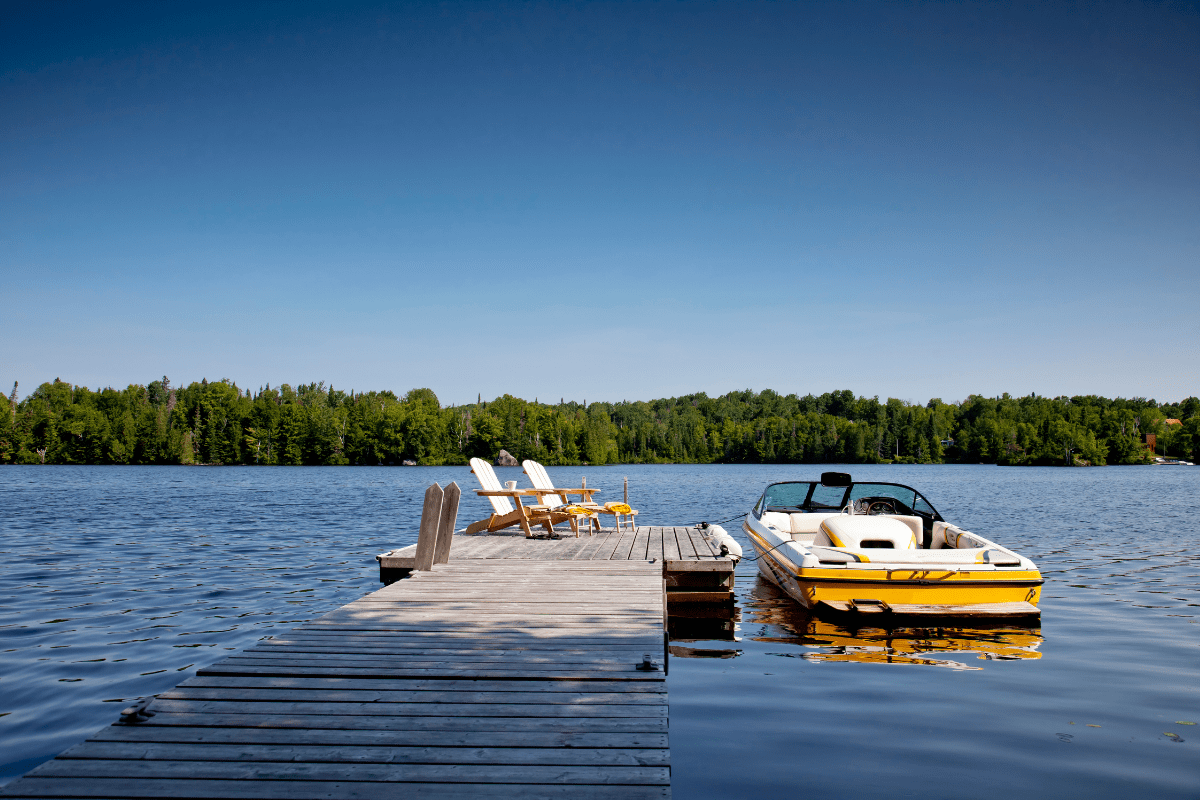Choosing where to plant your family roots in Montana feels like picking your favorite flavor at an ice cream shop with 50 options. Every city promises wide-open spaces, mountain views, and that coveted "small-town feel" even when the population tops 100,000.
Why families are flocking to Big Sky Country
Montana's pulling off something remarkable right now. The state boasts just 2.8% unemployment while the rest of the country hovers around 4.1%, and there's no sales tax eating into your Target runs. Property taxes sit at a reasonable 0.74%, leaving more money for important things like ski passes and beef jerky.
The numbers tell an interesting story. Montana achieved the highest millennial migration rate in the nation at 95% net positive, meaning young families are flooding in faster than college students flee their hometowns. Construction jobs are growing at 10.1% annually, and 12.5 million tourists keep the service economy humming along nicely.
Remote work changed everything. Suddenly, that Zoom background of mountain peaks isn't just a virtual backdrop… it's your actual backyard. Families trade two-hour commutes for two-minute walks to the trailhead, though they quickly discover "no traffic" doesn't mean "no elk crossing the road at inconvenient times."
School quality varies more than Montana weather
Finding great schools in Montana requires more research than you'd think. The good news? Several districts knock it out of the park.
Bozeman leads the academic pack
Bozeman School District earned an A+ rating from Niche, and the numbers back it up. Students hit 68% reading proficiency compared to Montana's 46% average, while 45% nail their math tests versus the state's 34%. The district maintains a comfortable 15:1 student-teacher ratio, giving kids actual face time with teachers instead of getting lost in the crowd.
Bozeman High School takes things further with 15 AP courses and a stunning 99% pass rate. The proximity to Montana State University creates unique STEM partnerships, meaning your kid might actually use that calculus they're learning. The school ranks #660 nationally, which sounds less impressive until you realize that's out of roughly 18,000 high schools.
Small towns surprise with quality
Whitefish proves size doesn't determine excellence. With just 7,751 residents, its high school claims the #2 spot statewide. Math proficiency hits 52% and reading reaches 62%, both crushing state averages. The intimate setting maintains that 15:1 ratio where teachers actually remember your kid's name… and probably yours too.
Helena takes third place, leveraging state capital resources to boost educational opportunities. Kalispell rounds out the top tier with Montana's only International Baccalaureate program at Flathead High School, where 28% of students participate. That's like finding a sushi restaurant in a town full of steakhouses… unexpected but delightful.
When bigger isn't better
Billings presents a puzzling case. As Montana's largest city, you'd expect stellar schools. Instead, students score 32% in math and 41% in reading, both below state averages. It's proof that in Montana's educational landscape, bigger budgets don't automatically equal better outcomes. Sometimes the small-town teacher who knows every family in the district outperforms the urban system with all its resources.
Housing costs span from "that's reasonable" to "are you kidding me?"
Montana's housing market resembles a poker game where Bozeman went all-in while Great Falls is still checking the rules.
The premium locations
Bozeman leads the expense parade with median homes between $745,000 and $979,500. The average household income of $115,764 helps, but that's still a hefty mortgage. One-bedroom apartments demand $2,078 monthly, making roommates suddenly seem appealing again even for families.
Whitefish follows closely at $858,051 median home prices. The resort town premium kicks in hard here… you're essentially paying for the privilege of living where others vacation. Limited inventory means bidding wars happen faster than you can say "ski season."
Where your dollar stretches
Great Falls emerges as the affordability champion with homes under $350,000 and rentals between $795-$950 monthly. Sure, it's not as Instagram-worthy as Whitefish, but your bank account will thank you. The city's largest employers, Benefis Hospital and Malmstrom Air Force Base, provide stable jobs without tech-boom prices.
Billings strikes the sweet spot for families wanting urban amenities without urban prices. At $387,898 median, you get Montana's biggest city perks… shopping that goes beyond one Main Street, restaurants with actual variety, and medical specialists who don't require a three-hour drive.
Helena ($443,000) and Missoula ($548,217) occupy the middle ground. They're pricey enough to make you wince but not expensive enough to require a trust fund. Think of them as the medium-priced menu items… not the cheapest option, but you won't need to split an entree.
Safety statistics full of surprises
Crime data in Montana cities defies expectations like a plot twist in a mystery novel.
The safest spots
Whitefish takes the crown with just 79 violent crimes per 100,000 residents. That's dramatically below Montana's 442 average, making it statistically safer than leaving your teenager home alone with the car keys. The town's $71,110 median household income and 97% white demographics paint a picture of stability, though diversity seekers might find it lacking.
The tiny mining town of Colstrip achieves remarkable safety with 50 violent crimes and 249 property crimes per 100,000. Of course, when your town's small enough that everyone knows everyone's business, crime becomes logistically challenging. Glendive maintains a 1% violent crime rate, proving that sometimes the best security system is nosy neighbors.
Navigate carefully in larger cities
Billings presents a complex safety picture with 888 violent crimes per 100,000, making it Montana's second-most dangerous city. But here's the thing… specific neighborhoods tell different stories:
- The Heights: 59 violent crimes per 100,000
- Briarwood: 68 per 100,000
- Indian Arrow: 82 per 100,000
- Meadowlark: 93 per 100,000
Great Falls struggles with 4,675 property crimes per 100,000, suggesting residents should probably lock those doors they've been leaving open since 1952. Tourist hotspot Polson surprisingly ranks third-worst with 868 violent crimes per 100,000, proving that seasonal population swings affect more than just restaurant wait times.
Healthcare ranges from world-class to "hope you're healthy"
Medical care in Montana follows a predictable pattern… the bigger the city, the better your options.
Top-tier medical centers
Providence St. Patrick Hospital in Missoula claims Montana's #1 ranking with Medicare's 5-star rating, an "A" safety grade from Leapfrog, and Magnet Hospital status. That's like getting straight A's, making the honor roll, and being voted most likely to succeed. The area offers 15 pediatricians within 12 miles, averaging 4.8-star ratings compared to 4.1 nationally.
Billings Clinic operates Montana's only Level I Trauma Center, handling everything from skiing accidents to farming mishaps. With $871 million in net patient revenue and 4,600 employees, it's essentially the Mayo Clinic of Montana… minus the Minnesota winters.
Bozeman Health Deaconess Hospital's 86 beds earned recognition as one of America's 100 Best Facilities for Pulmonary Care. Breathing easy takes on new meaning when you're surrounded by some of the country's cleanest air and best lung doctors.
Statewide healthcare reality
Montana hosts 227 pediatricians serving 1.1 million residents. That's roughly one pediatrician per 4,845 people, which sounds sparse until you remember that half of Montana's population consists of particularly healthy cattle. The 4.37-star average rating beats many urban areas, and telemedicine increasingly connects rural families to specialists without the six-hour round trips.
Cities where families actually want to live
Let's dive into what makes each major Montana city tick for families.
Bozeman: Where education meets expense
Bozeman attracts families like a magnet attracts metal filings, and for good reason. The A+ rated schools deliver actual results, not just good PR. Tech companies discovered that employees work better with mountain views, driving salaries up along with housing costs.
Why families choose Bozeman:
- Top-tier schools (68% reading proficiency)
- Growing tech job market
- Montana State University resources
- Incredible outdoor recreation access
Why families leave Bozeman:
- Median homes approaching $1 million
- Growing traffic congestion
- Increasingly competitive atmosphere
- Locals grumbling about Californians
Billings: Best bang for your buck
Billings plays the role of Montana's practical older sibling. It might not win any beauty contests against Whitefish, but it gets the job done without emptying your wallet.
WalletHub ranked Billings #51 nationally for families, ahead of Salt Lake City and Cheyenne. The city offers real urban amenities… multiple grocery stores, actual shopping options, and restaurants where "exotic" means more than just adding jalapeños.
Why families choose Billings:
- Affordable housing ($387,898 median)
- Largest job market in Montana
- Level I trauma center
- Real city amenities
Why families think twice:
- Higher crime rates overall
- Schools underperform state averages
- Less scenic than other options
- Industrial feel in parts
Whitefish: Safety meets ski slopes
Whitefish resembles that friend who seems to have everything figured out… beautiful, safe, and slightly unattainable. With 79 violent crimes per 100,000 residents, it's statistically safer than most family reunions.
Why families love Whitefish:
- Exceptional safety statistics
- Outstanding schools (#2 statewide)
- Glacier National Park proximity
- Year-round outdoor paradise
Reality checks for Whitefish:
- Median homes at $858,051
- Tourist crowds in season
- Limited job diversity
- Really long winters
Missoula: College town charm
Missoula offers that perfect college town vibe where coffee shops outnumber gas stations and everyone has strong opinions about locally sourced everything. The 22 miles of trails connect neighborhoods better than most cities connect their suburbs.
CNN named Missoula to their Best Towns to Visit 2025 list, which sounds great until you realize tourists discovered your secret spot. Still, the #1 ranked hospital and University of Montana create a cultural richness rare in cities this size.
Great Falls: Surprisingly livable
Great Falls gets overlooked like the middle child at Christmas, but it deserves better. Under $350,000 median home prices make it Montana's most affordable major city, while the 60-mile Rivers Edge Trail system rivals anything in the state.
The city hosts 10+ museums including the renowned C.M. Russell Museum, proving culture exists beyond the college towns. Benefis Hospital employs 3,000+ people, providing stable healthcare jobs without Billings prices.
Helena: Capital advantages
Helena leverages its capital status into surprisingly good schools (#3 statewide) and the state's best walkability score. Government jobs provide recession-proof stability, though private sector opportunities remain limited.
The infrastructure reality check
Before you pack up and head to Montana, understand some statewide challenges that affect every city.
Montana ranks 50th nationally in broadband coverage with only 30% fiber access. Your Zoom calls might freeze more often than the winter temperatures. The average city walkability score hits just 43 out of 100, meaning that car-free lifestyle you imagined probably isn't happening.
Weather remains Montana's ultimate wildcard. Winter lasts approximately forever in some areas, and "spring" often means "winter's revenge tour." Summer brings smoke from wildfires, though locals adapt like it's just another season… construction, tourist, fire, and ice.
Hidden gems worth considering
Sometimes the best family spots hide in plain sight. Four Corners ranks #1 on Niche for Montana families, offering Bozeman schools without quite-Bozeman prices. Dillon earned HomeSnacks' top spot for affordability with its $42,037 median income making every dollar count.
Making your Montana decision
Choosing your Montana city boils down to prioritizing what matters most:
Choose Bozeman if:
- School quality trumps everything
- Tech career opportunities matter
- You can handle $750K+ housing
Pick Billings if:
- Urban amenities are non-negotiable
- Budget concerns are real
- Medical access is crucial
Select Whitefish if:
- Safety statistics keep you awake
- Outdoor recreation drives decisions
- Money isn't an object
Consider Great Falls if:
- Affordability tops your list
- Job stability beats excitement
- Museums matter more than microbreweries
Montana delivers something increasingly rare… authentic community in spectacular settings. Sure, you'll battle winter, hunt for decent internet, and explain to relatives why the nearest Target is two hours away. But you'll also watch your kids grow up knowing their neighbors, exploring actual wilderness, and understanding that the best things in life often require a little extra effort.
The data shows families aren't just surviving in Montana… they're thriving. With smart city selection matching your priorities and budget, you might discover that Big Sky Country offers exactly the family lifestyle you've been searching for. Just remember to wave at passing cars… it's the Montana way.





